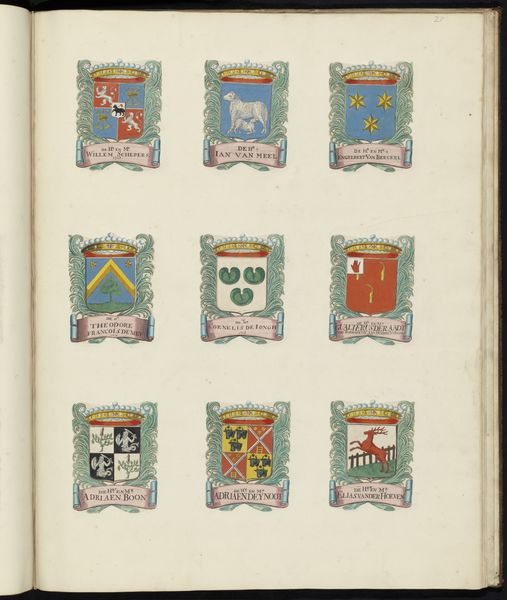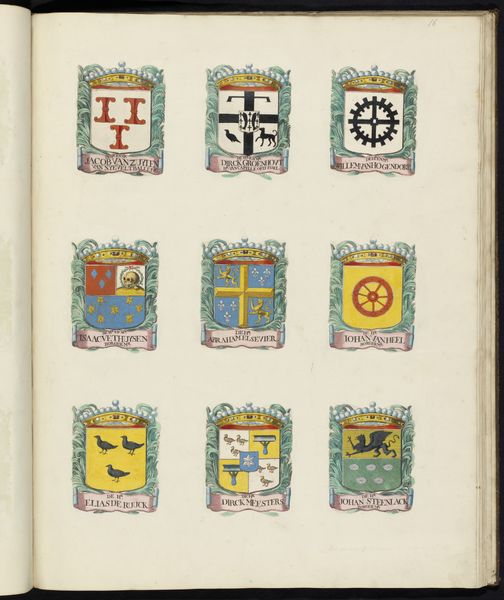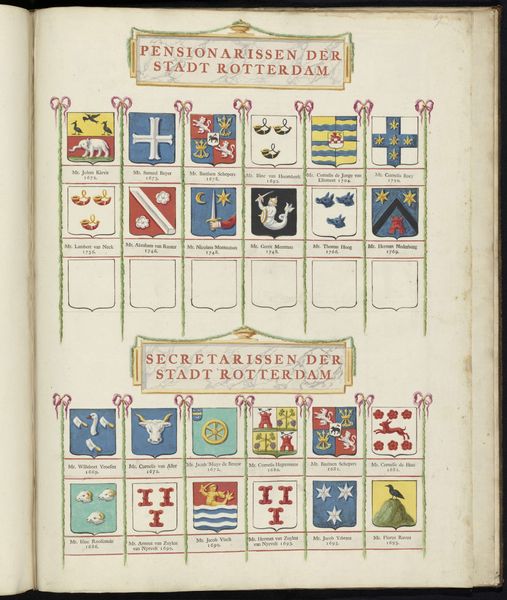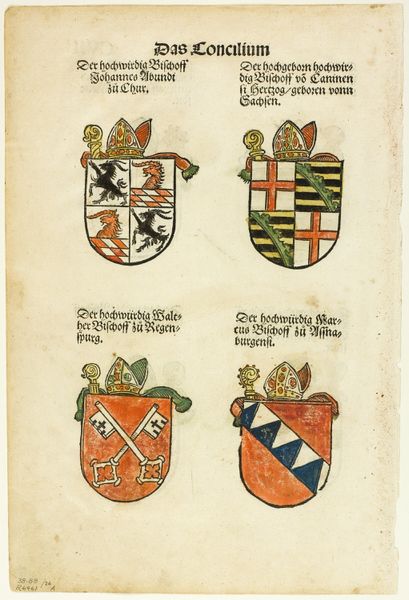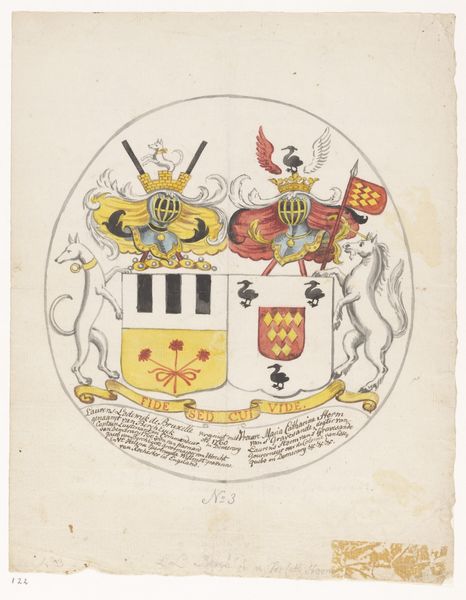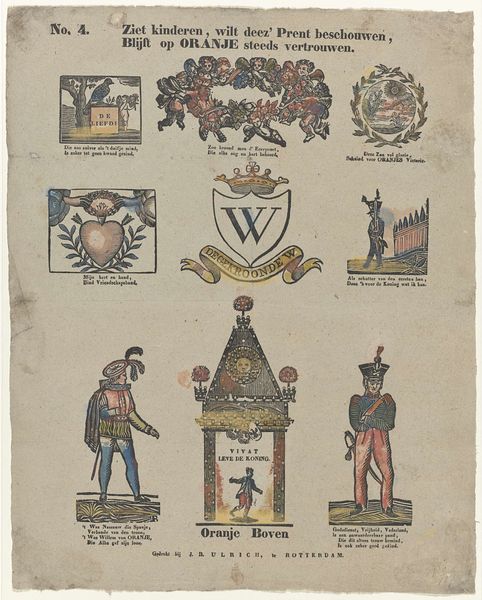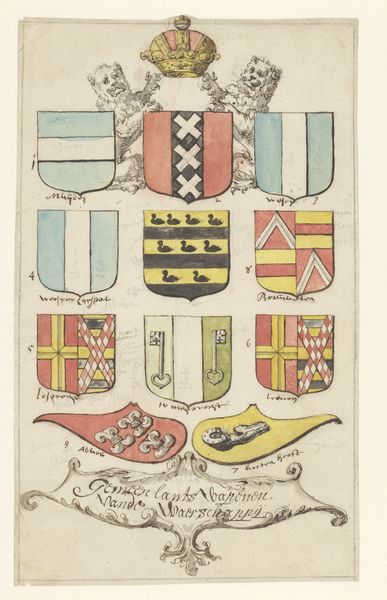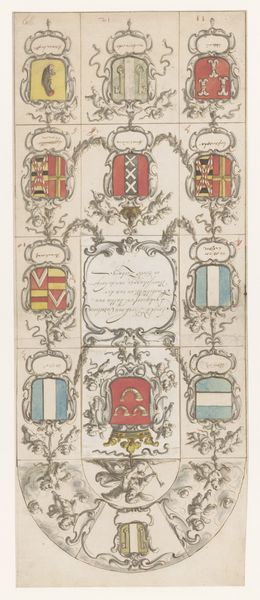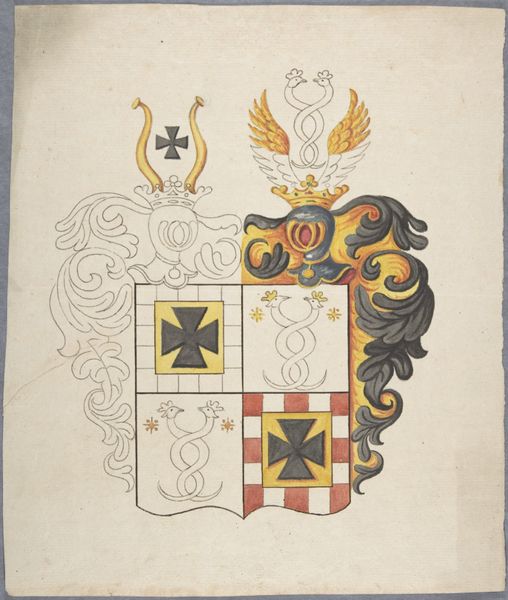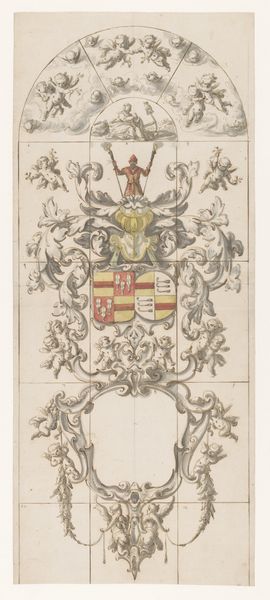
Negen wapens van raden in de vroedschap van Rotterdam, rechtsboven het wapen van Gerard van der Dussen before 1783
0:00
0:00
Dimensions: height 460 mm, width 580 mm
Copyright: Rijks Museum: Open Domain
Curator: Here we have a fascinating page, showcasing nine coats of arms associated with the council of Rotterdam, dating from before 1783. It is an ink, watercolor, and coloured pencil drawing. The upper-right shield bears the arms of Gerard van der Dussen. Editor: My initial reaction? These are surprisingly whimsical! Almost like individual, brightly coloured postage stamps arranged on a page. Each tells a silent story, but I want to know those stories. Curator: Indeed! The heraldic tradition, of course, speaks volumes about lineage, power, and social standing. The coats of arms featured belonged to members of Rotterdam's vroedschap, or city council. So, examining these symbols helps us understand the individuals and families who wielded influence in the city. They are essentially emblems of power. Editor: Absolutely. And power visualised can be quite a statement, right? But also kind of endearing in their almost playful use of imagery – animals, stars, abstract forms... like visual riddles the owners are making each other answer. Also this riot of colour. It feels baroque and modern somehow. Curator: Precisely. They also visually signal adherence to prevailing social hierarchies and systems of governance. Considering the time in which it was made, we might reflect on how these visual pronouncements reinforced class divides and sustained a specific political structure. The question becomes: How did displaying your personal symbol through art work for solidifying a small cadre of societal leaders. Editor: Hmmm...it's like an early version of branding yourself but within very restricted groups of wealthy rulers! I’m really struck by how accessible they seem to want to be. The coats of arms practically beg to be interpreted, to reveal layers of family narrative, history, position of wealth and success and personal quirk. What strikes you the most? Curator: I keep coming back to the conscious artistic act to solidify the establishment through visual self-affirmation. These brightly rendered heraldic badges, displayed within the context of governance, served as constant visual reminders to themselves as much as the public of their established roles within the system. I also ponder the choices behind certain symbolic elements to enhance specific agendas and public persona? Editor: Agreed, Curator! Thinking about today’s political landscape and ways the rich flaunt their influence… Some of these techniques haven't evolved that much through centuries, have they? Curator: No, I suspect not. It makes one think. Editor: Food for thought and eye-candy for me.
Comments
No comments
Be the first to comment and join the conversation on the ultimate creative platform.
